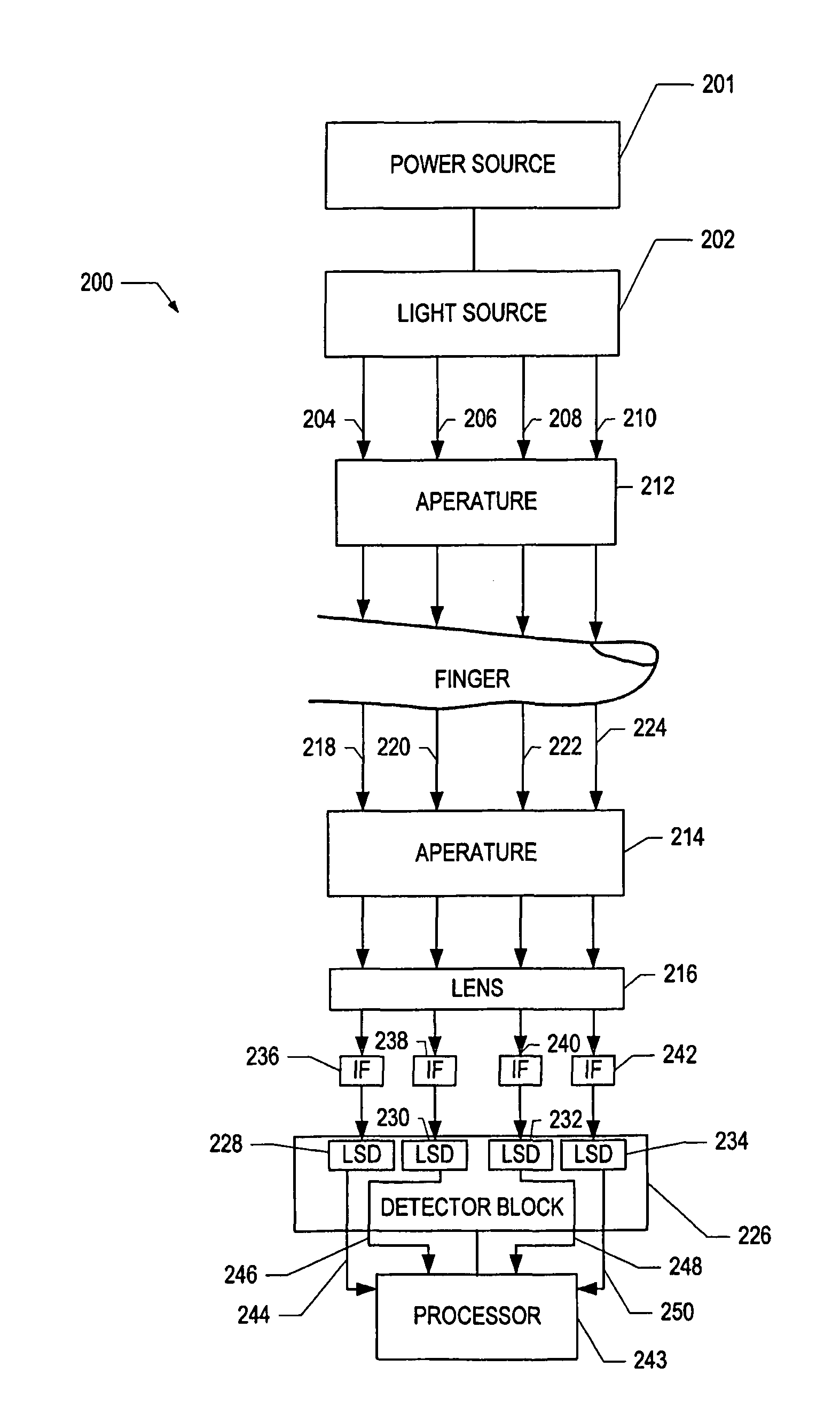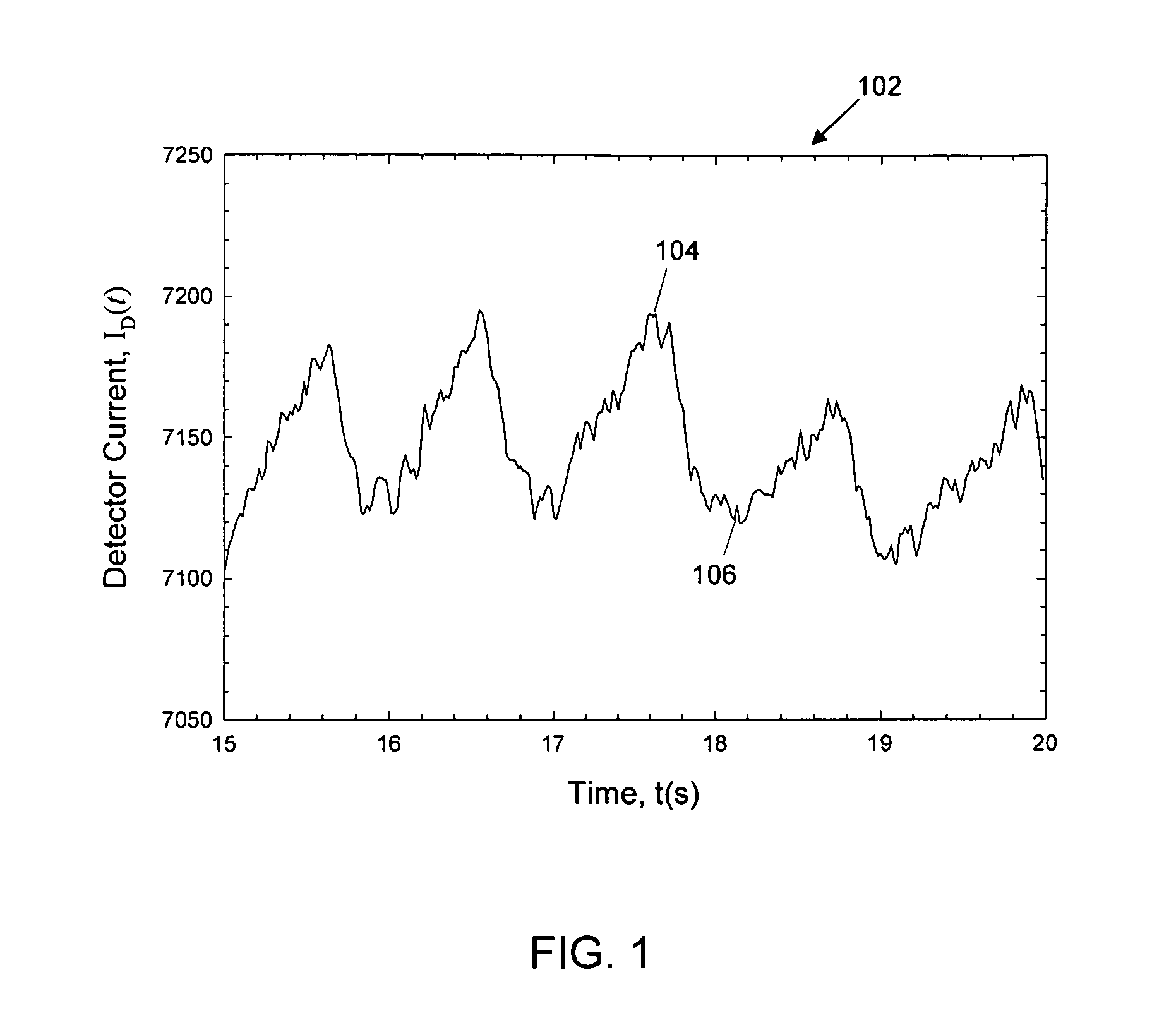Method and system for non-invasive optical blood glucose detection utilizing spectral data analysis
a non-invasive, optical technology, applied in the field of non-invasive optical blood glucose detection utilizing spectral data analysis, can solve the problems of serious damage to many body systems, many diabetics to not be as diligent as they should be for good blood glucose control, and the economic burden of diabetes for individuals and society as a whole, so as to eliminate the effect of uncertainty
- Summary
- Abstract
- Description
- Claims
- Application Information
AI Technical Summary
Benefits of technology
Problems solved by technology
Method used
Image
Examples
Embodiment Construction
[0025]In the following detailed description, numerous exemplary specific details are set forth in order to provide a thorough understanding of the invention. However, it will be understood by those skilled in the art that the present invention may be practiced without these specific details, or with various modifications of the details. In other instances, well known methods, procedures, and components have not been described in detail so as not to obscure the present invention.
[0026]Optical spectroscopy can be used to determine the amount of light absorbed and scattered, i.e., attenuated, by a biological sample such as a human finger. By measuring the amount of light absorbed by the sample, it is possible to determine glucose, cholesterol, and hemoglobin levels of a subject non-invasively. Fingertip measurements are usually preferred because of the large concentration of capillaries in the fingertip and because of the conversion of arterial blood into venous blood that occurs in th...
PUM
 Login to View More
Login to View More Abstract
Description
Claims
Application Information
 Login to View More
Login to View More - R&D
- Intellectual Property
- Life Sciences
- Materials
- Tech Scout
- Unparalleled Data Quality
- Higher Quality Content
- 60% Fewer Hallucinations
Browse by: Latest US Patents, China's latest patents, Technical Efficacy Thesaurus, Application Domain, Technology Topic, Popular Technical Reports.
© 2025 PatSnap. All rights reserved.Legal|Privacy policy|Modern Slavery Act Transparency Statement|Sitemap|About US| Contact US: help@patsnap.com



